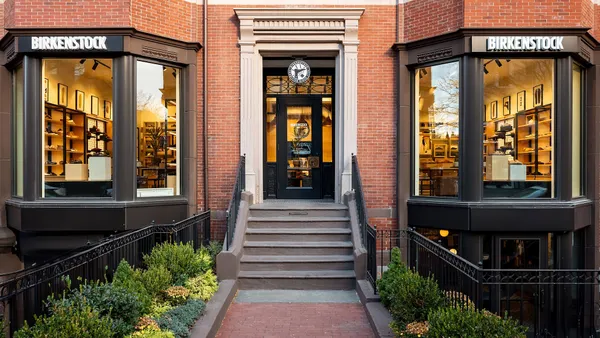Dive Brief:
- With the retail industry leading the way, downgrades outpaced upgrades last week among U.S. corporations covered by S&P Global Ratings.
- The ratings agency said that the U.S. distress ratio, which is a “key indicator” for rising default risk, jumped in the past week to 8.7% from 6.4% in the prior week, and is up from 2.4% from the end of May.
- While ratings changes so far have been less volatile than markets, S&P analysts said that “inflation, energy security, geopolitical uncertainty, and rapidly tightening financing conditions are increasingly putting pressure on issuers.”
Dive Insight:
While many expected a year of slower growth compared to the boom times of, well, just a few months ago, the environment has rapidly shifted and talk of a recession is rising.
Robust consumer spending and cheap capital have kept many retailers in the black for the past year and a half. That led to a sharp drop-off in retail bankruptcies last year that continued for the most part into 2022, and may have kept some weaker players afloat.
But it was the retail industry that pushed downgrades past upgrades last week, according to S&P, which downgraded Bed Bath & Beyond’s corporate rating to B- on July 1 and temporarily gave Rite Aid a default-level rating after the drugstore retailer completed a more than $190 million distressed bond exchange to ease its debt obligations.
Bed Bath & Beyond is a telling case for the industry. Buoyed early in the pandemic by a sharp uptick in home goods purchases, fueled both by pandemic trends and government stimulus checks, the retailer has so far this year experienced accelerating sales declines.
Bed Bath & Beyond suffered first from troubles securing inventory during last year’s supply chain turmoil, and then from a sharp slowdown in consumer spending as stimulus ran out and inflation weighed on discretionary spending. Things got so bad so quickly at Bed Bath & Beyond — a turnaround that was bearing fruit just a couple of years ago — that its CEO was shown the door around its most recent earnings release.
Two recent bankruptcies also show some of the challenges in the market right now for consumer-facing companies without financial firepower.
After years of struggling under a large debt load, cosmetics giant Revlon went into Chapter 11 in June as it struggled to secure enough supply to fill retailers’ orders for the holidays. Commerce-at-home company Enjoy Technology also had trouble bringing in revenue because of supply constraints before it filed. Both were unable to raise new financing outside of a bankruptcy process.
Capital constraints could be just as painful as the shifts in consumer spending after the Federal Reserve sharply increased interest rates. In a presentation, S&P analysts noted that market liquidity is falling and primary markets are choppy. For now, though, the analysts said refinancing risk remains “limited” and defaults are still trending lower than in 2021.
But the ratings agency still sees “cracks in the foundation” of the U.S. economy. In a late June press release, S&P forecasted a “low-growth recession” in 2023 — with GDP growth at 1.6% and rising unemployment — given “continued higher prices and borrowing costs as cumulative rate hikes take hold.”














